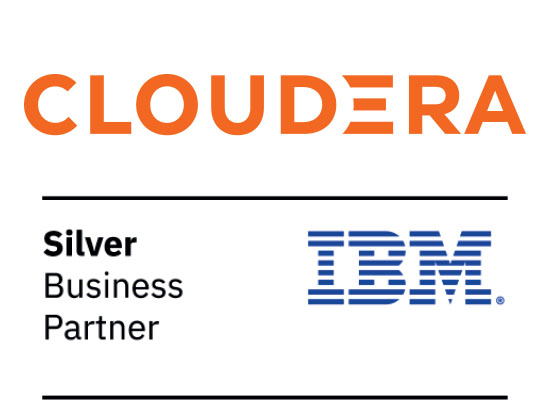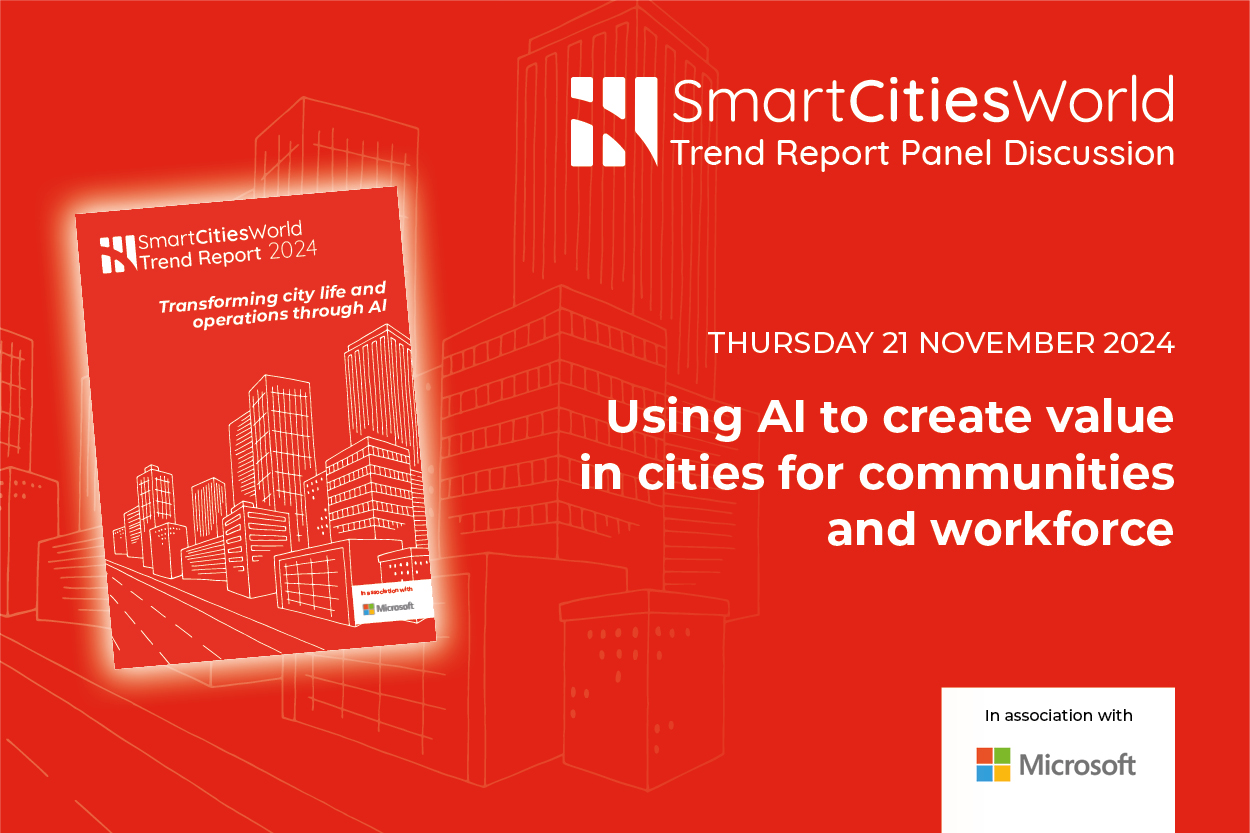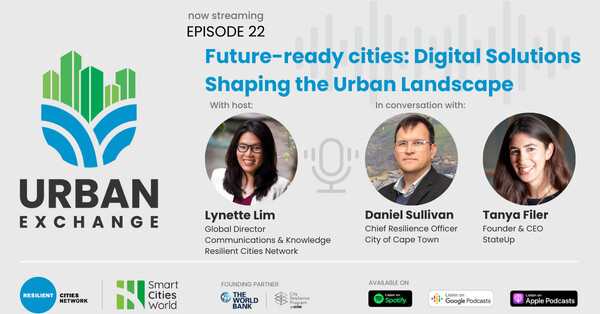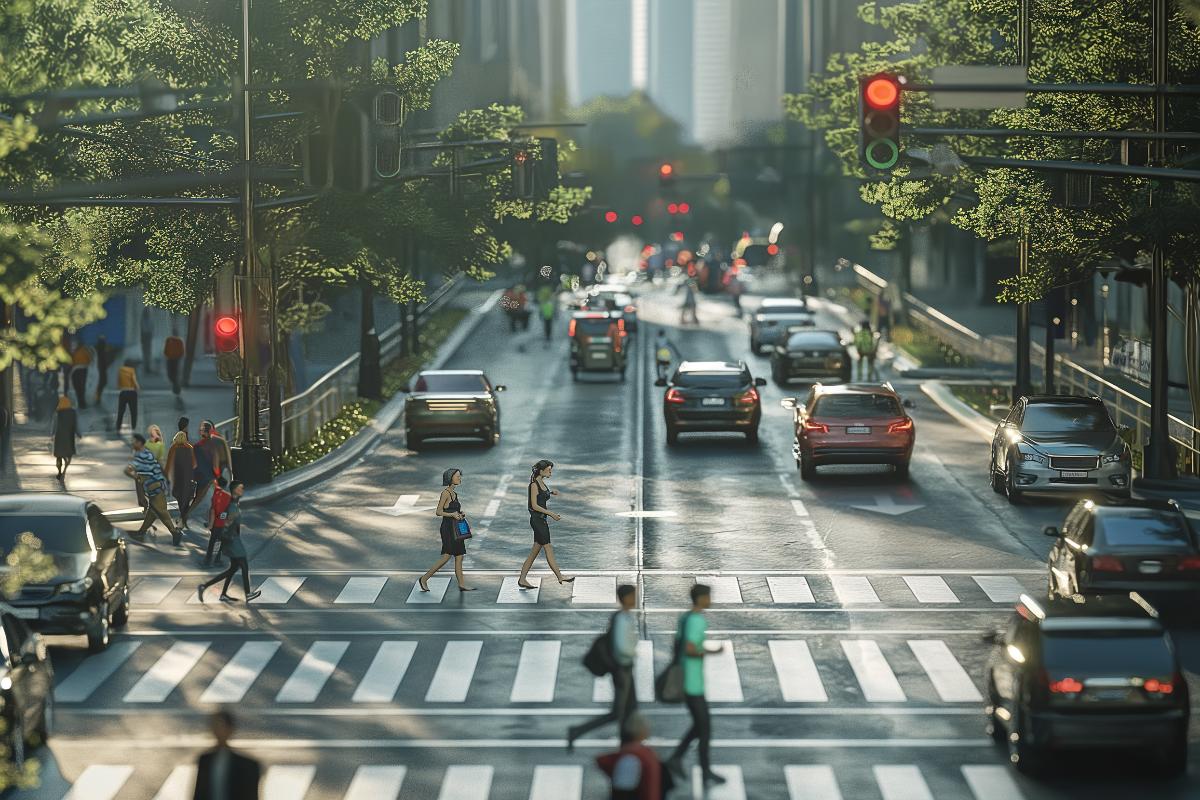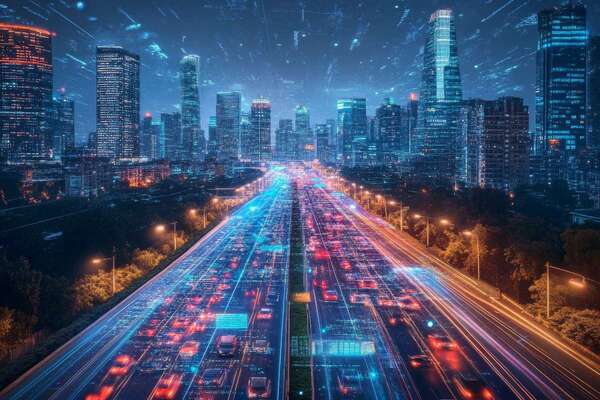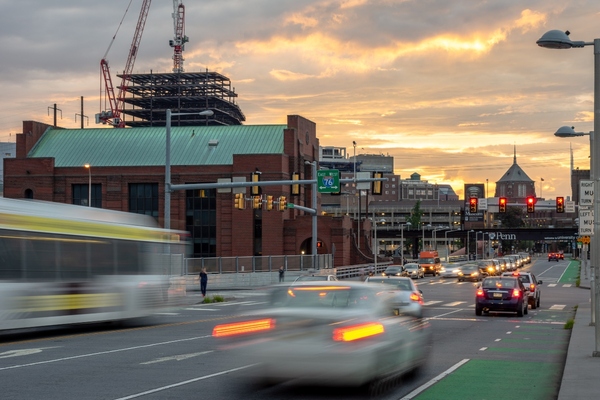Special Reports
SusHi Tech Tokyo 2024: experience ‘Tokyo 2050’ todaySponsored by The SusHi Tech Tokyo 2024 Showcase Program Executive Committee
Podcast: Enhancing city operations through 5G, AI and data management
In the latest SmartCitiesWorld podcast, sponsored by Cloudera and IBM Storage, senior editor Luke Antoniou hosts Anthony Behan, managing director for communications, media and entertainment at Cloudera, to talk 5G, data, connectivity, and what innovation in this space means for telcos and their customers in cities.
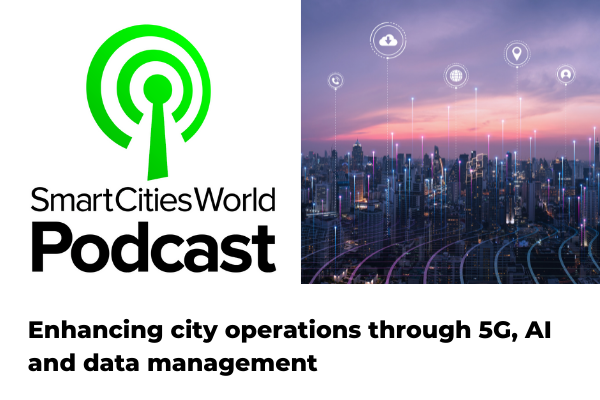
In the latest SmartCitiesWorld podcast, sponsored by Cloudera and IBM Storage, senior editor Luke Antoniou hosts Anthony Behan, managing director for communications, media and entertainment at Cloudera, to talk 5G, data, connectivity, and what innovation in this space means for telcos and their customers in cities.
SmartCitiesWorld
The first thing I want cover is 5G - a technology that’s underpinning some of the most significant innovations we’re seeing in cities. Where do you think, in terms of industry sectors, we’re going to see the most significant impact from 5G rollouts?
Anthony Behan
I think there’s a tendency in the industry to think of 5G as just another ’G’ after 3G and 4G. To some degree, that’s true - there is more bandwidth, lower latency, better coverage, and that’s good. From a consumer perspective, 5G is going to be better than 4G in certain respects, but the standard that we’ve achieved at this stage in terms of telecommunications networking in a wireless context is such that, for the applications consumers use it for, like streaming HD video, a good 4G connection is good enough to be able to do pretty much everything that you want. 5G isn’t really about the consumer - it is about the enterprise.
What 5G gives you in telecommunications terms is a pervasive, immersive connectivity experience. The kinds of applications that are going to need that are those that require a whole host of sub-applications to be running at the network edge for decisions to be made in real time, processing massive volumes of information, running AI, analytical workloads, close to the point at which the data is being collected. Cities are clearly a fantastic theatre for the potential of 5G to really unfold, so I think I think that’s where we’re going to see massive applications.
SmartCitiesWorld
What do you think some of those applications are going to look like for cities when we consider the infrastructure that 5G is going to support?
Anthony Behan
I think if you look at the volumes of data that are being thrown off by cars at this stage, it’s just phenomenal. A lot of the processing in connected cars is currently being done in those cars, and that’s quite restrictive if you’re trying to do something like context mapping, where you want to understand a car relative to its surroundings, other cars, and other machines. When we think about connected vehicles, it’s not just cars, but buses, trucks, delivery vehicles, ambulances - all those other vehicles that are on the road that are part of an integrated service delivery chain for something else. It’s not just about transport, it’s about health care delivery, logistics and supply chain, retail. All of these things are connected, but the kind of capabilities that 5G has will allow you to understand all of that data in real time.
When you think about safety and security applications, and real-time applications that are dependent on a confluence of events that happen at a particular moment, you can’t afford to wait for 15-minute batch uploads - you’ve got to be able to react to things that happen in real time. Smart routing of services is something that begins to become possible with 5G connectivity.
SmartCitiesWorld
What benefits does that bring to city services when you consider that, for the first time, this kind of wireless connectivity could be reliable for critical communications?
Anthony Behan
The current paradigm is such that connected vehicles are self-contained devices that are connected to the internet. There are sensors, cameras and so on that are sitting on the car that can perceive things that are happening around them. These vehicles have an extensive but nevertheless limited set of capabilities. We’ve seen incidents where automated cars have been operating in autonomous mode and have, to one degree or another, failed because they don’t understand the surrounding environment well enough. 5G opens up the possibility that you no longer think about the car and its instruments, but the car in relation to its environment and other intelligent devices in the vicinity. There’s then a network that’s sitting above the car, connecting the car to the road, to the traffic infrastructure, to the other vehicles that are there. You’re then monitoring an ecosystem of devices, and then suddenly the safety, security and performance applications begin to unfurl.
SmartCitiesWorld
How is Cloudera’s work helping to support the rollout of these applications for telcos and, as an extension of that, their end users in cities as well?
Anthony Behan
Cloudera isn’t just facilitating the collection and storage of data - we talk about edge to AI, distributing workloads and distributing application processing as close to the point of data collection as possible. Pushing applications out to the edge, pushing analytics out to the edge, and pushing storage out to the edge is very important, as is optimising the distribution of performance and storage across the data spectrum, and then all the way through to through to your applications. AI visualises your business process integration. The question then is how to inject the value of the insights from this data into the operations of the city. The Cloudera data platform allows you to do all of that. We do it in a hybrid cloud environment.
There are a lot of non-financial objectives around data processing, AI, and smart cities. One of them is privacy, for example - it’s really important to protect consumer privacy and citizen privacy. To do that, we need to be compliant with the law, but we also need to have structures and governance in place that allows us to have auditability, transparency and so on. Having that governance layer across the different silos of information that we have across different clouds is really important.
The shared data experience component that Cloudera has allows you to manage across multiple clouds, and then expose that data in an appropriate way to the different consumers of that data, whether that’s applications and systems or people and machines.
in association with:
